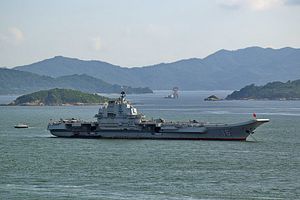The People’s Republic of China finds itself in a dangerous position. As the COVID-19 outbreak developed and spread out of Wuhan, Beijing’s initial policy of withholding information gave way to declarations of victory over the new coronavirus. But these claims of success and aid to suffering countries have come off as tactless and crass, even by PRC standards. Alongside this “Wolf Warrior diplomacy,” China’s armed forces have also engaged in a multitude of small-scale but aggressive maritime actions against neighboring countries, part of an expanding pattern of intimidating or malicious activities. Taken together, these unusual behaviors show that China has adopted a policy of triumphalism, as it did after the 2008 financial crisis. However the hamfisted implementation of this policy, in addition to sparking significant backlash, suggests that Chinese leader Xi Jinping’s sense of fear is overruling his prudence.
At sea, Beijing’s aggressive activities have included the following:
- Encroachment on Indonesian fisheries with its Coast Guard in tow in January;
- Ramming a Taiwanese Coast Guard vessel on March 16;
- A collision between a Japanese Maritime Self-Defense Force destroyer and a Chinese fishing boat in the East China Sea on March 30;
- A Chinese Coast Guard vessel colliding with and sinking a Vietnamese fishing boat near the Paracel Islands on April 2;
- Conducting drills the same day a U.S. Navy destroyer transited Taiwan Strait on April 11;
- Deploying the aircraft carrier Liaoning through the Miyako Strait around April 13;
- Sending an exploration vessel into the Malaysian exclusive economic zone on April 16;
- Establishing new districts in the South China Sea on April 19;
- Officially naming South China Sea features on April 20;
- Claiming to “expel” a U.S. vessel conducting routine freedom of navigation operations while hinting at threatening U.S. sailors’ lives on April 28;
- Sending the Liaoning through the Miyako Strait again on April 28, for the second time in April, but only the fifth time since the carrier’s 2012 launch.
Why is China doing this? Seen in the context of Beijing’s crisis response, we can say it is adopting a triumphal posture similar to that following the 2008 financial crisis. Having survived the earlier crisis relatively intact while offering aid to others, many in China began to see their country as a world leader. With that sense came a rising tide of Chinese pressure, culminating on the eve of Xi’s ascent in 2012 with moves against the disputed Scarborough Shoal and Senkaku Islands.
But Xi’s triumphalism is of a different sort. It is not a gradual crescendo of popular pride, but a top-down declaration of victory, even as those on the ground continue to fight the pandemic. This is not a steadily increasing pressure on neighbors but might well be called a “flaring of flags and beating of drums” (大张旗鼓, dazhang qigu). More is at play here than a simple “victory lap.”
One possibility is that China is exercising a sort of deterrence: the use of signals to dissuade opponents from acting in undesirable ways. For the People’s Liberation Army, deterrence includes parades, exercises, and other displays of capability to convince opponents of the PLA’s ability to resist. Examples include the 2015 and 2017 military parades.
But deterrence can also be for a specific end; for example, increased PLA military activity during Taiwan’s elections for the apparent purpose of warding Taiwanese away from Beijing’s disfavored candidate. Note that Taiwan’s citizens have consistently taken such actions as a threat, strengthening their will to oppose Beijing.
Thus we could nominally ascribe each of China’s micro-aggressions to specific issues, for example maritime sovereignty or local fishing rights. In the context of the present crisis, however, it does not make sense for Beijing to exacerbate specific grievances willy-nilly. Indeed, the PRC’s public line is one of international cooperation, which these acts directly undermine. Rather, these incidents are better understood as signals to keep China’s neighbors from interfering in China’s affairs at this specific moment, suggesting that Xi feels particularly vulnerable to foreign interference.
We must also consider two other possibilities: (1) that these are operations China conducts on a regular basis, or (2) that these operations are to gain ground using “grey zone” tactics, meaning operations that materially advance Beijing’s interests without provoking conflict. It is possible that some of the incidents above were long planned and are not part of this pattern. However, the number, aggressive nature, and negative reactions these moves have provoked strongly suggest China has altered its patterns. Moreover, they do not seem geared toward material gains, but are rather symbolic actions. However, we must remain alert to the danger that such increased activities portend an attack against a neighboring country, especially Taiwan.
There are two powerful trends supporting the idea that China is deterring out of perceived weakness: economic distress in China and a growing resistance abroad. The lessons Beijing drew from the 1989 Tiananmen Massacre were the urgency of crushing internal unrest and the need to mitigate international repercussions. The current environment indicates that Tiananmen’s damage to China will pale in comparison with that of the pandemic, an ominous sign for paramount leader Xi.
The nominal goals of Beijing’s campaign are to show the Chinese people that the Communist Party has spared them from great destruction and to show the world that the China is a public health superpower. But this veneer was wearing thin from the beginning. Indeed, China’s first public reference to the disease came about not to control it, but to prevent popular unrest. China’s forays into international brinksmanship continue this trend: abnormal actions showing the fear that attends abnormal times.

































